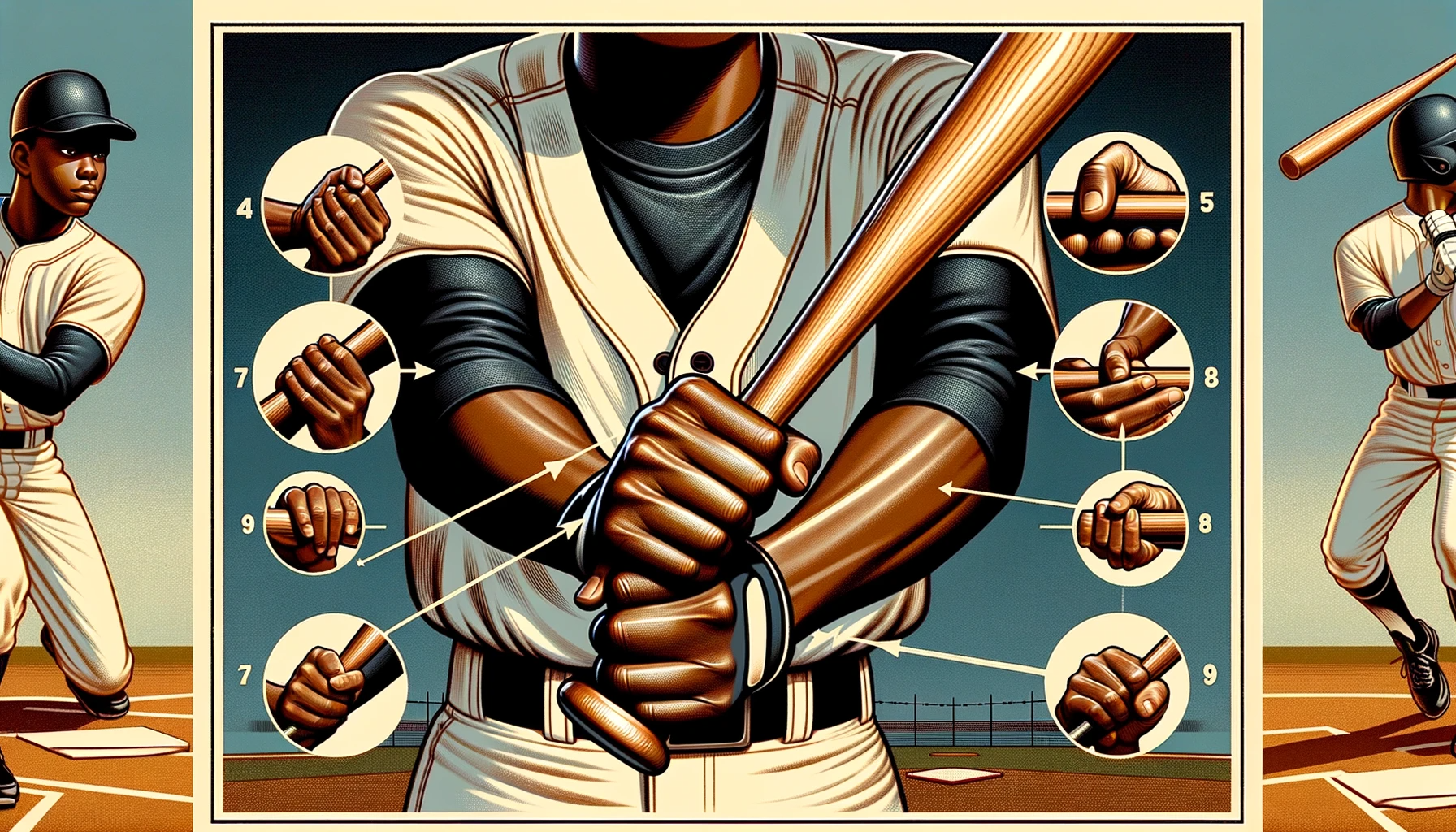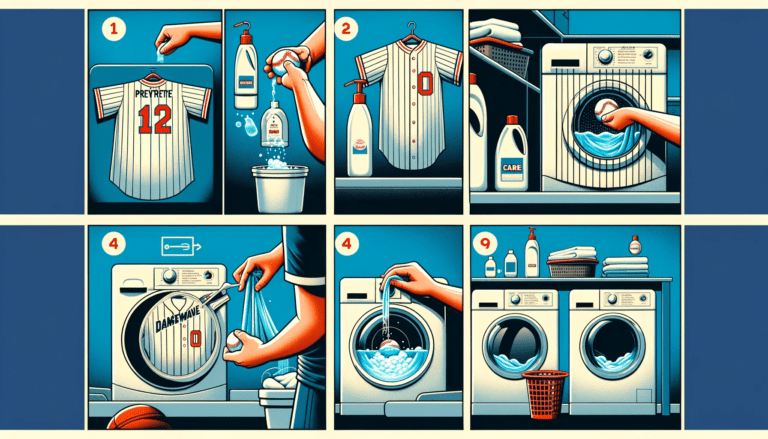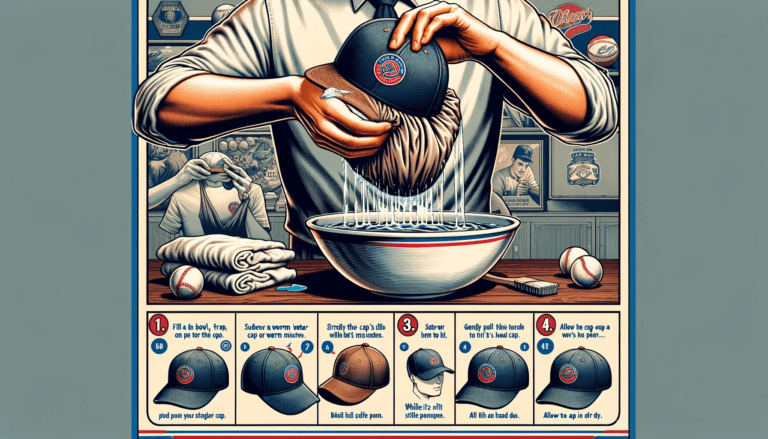How to Hold a Baseball Bat?
Holding a baseball bat the right way might seem simple, but getting it wrong can really affect your game. Many players, from beginners to those with some experience, often make small mistakes without realizing it.
These mistakes can lead to weaker hits and less control over bat speed and where the ball goes. But don’t worry, there’s a straightforward fix.
In this guide, we will show you the proper way to hold a baseball bat handle, ensuring you get the best grip every time you’re up to bat. With the right hold, you’ll see a big improvement in your swings and overall performance.
Let’s get started on boosting your batting skills.
Key Takeaways
- Understanding hand alignment is crucial for a powerful and accurate swing, as misaligned hands can lead to major grip faults.
- Grip pressure should be balanced; too tight can hinder wrist rotation and power, while too loose can reduce control.
- The grip should be positioned under the pad at the base of the fingers for a ‘weak’ feel, promoting a swing rather than a club control approach.
- A balanced swing with a square clubface at impact is fundamental, avoiding excessive backswing for better rhythm and consistency.
- Improving grip fundamentals is one of the simplest ways to enhance ball striking consistency and increase distance.
Understanding the Fundamentals of a Proper Grip
The Role of Hand Alignment in Your Swing
Achieving a proper grip on a baseball bat begins with the alignment of your hands. Proper hand alignment is crucial for a consistent and powerful swing.
The palms of your hands must be parallel to each other when gripping the bat. This alignment allows palm up for better control and a smoother swing path.
Here are some common mistakes to avoid:
- Misaligned hands can lead to a weak grip and inconsistent swings.
- Dropping your hands lowers the bat’s starting position, which can cause a longer, upward swing to the ball.
To correct these issues, practice gripping a plain wooden ruler or yardstick. This simple tool can help you feel the correct alignment of bottom hand and improve your grip quickly.
Remember, a neutral grip is best, ensuring the index finger on your lead hand (left hand for right-handed players) is not rotated too far in either direction.
This will set the stage for box grip for your right hand to find its proper position, leading to a more effective and controlled swing.
Grip Pressure: Finding the Sweet Spot
Finding the right bat grip and pressure is crucial for a smooth swing. Grip too tightly and you risk losing flexibility and fluidity; too loose, and the bat may slip or cause inconsistent contact.
Here’s how to find that perfect balance:
- Start by holding the bat with a pressure that feels comfortable and secure, without straining your muscles.
- Experiment with slight adjustments in pressure during practice swings to determine what feels most natural and effective.
- Pay attention to the position of your grip in the upper/left hand, ensuring it’s neither too high nor too low on the handle.
Remember, the goal is to maintain a firm yet relaxed grip throughout the swing. This allows for bat angle for better control and power without compromising on the bat’s speed or comfort.
Positioning the Grip for Optimal Control
Achieving a masterful swing begins with the correct positioning of your hands on the bat. Your dominant hand should be placed at the base, ensuring a firm yet flexible hold grip on the bat. This foundational step is crucial for control and precision.
- Ensure your palms are facing each other to establish a neutral grip.
- Align the bat so that it feels like a natural extension of your arms.
- Adjust your stance so that the bat is centered, promoting a balanced swing.
Remember, the grip is your only connection to the bat, making both bat control and its proper positioning a pivotal aspect of your swing mechanics.
A neutral grip allows for a square clubface at impact, which is essential for hitting the ball accurately. Take the time to practice your grip positioning to find the sweet spot that works best for you.
Read Also: Can You Hit Baseballs with a Softball Bat
Achieving the Perfect Clubface Position

How to Square the Clubface at Impact
Squaring the clubface at impact is crucial for a precise and powerful swing. The key lies in mastering your wrist angles; too much extension or cupping the top hand can open the face, while excessive bowing or arching will close it.
Here are some steps to ensure a square clubface:
- Ensure your setup is correct; a rushed setup can lead to a poor swing.
- Learn the mechanics of wrist flexion and extension.
- Practice forward shaft lean to maintain the right clubface angle at impact.
By focusing on these aspects, you can achieve a consistent and controlled swing, leading to better shots and a more enjoyable game.
Clubface Positions to Know
Understanding the different clubface positions is crucial for mastering your swing. An open clubface tends to point right of the target line for a right-handed player, often leading to a slice.
Conversely, a closed clubface points left, causing the ball to hook. The ideal is a square clubface at impact, which should result in a straight-flying golf ball.
To consistently achieve a square clubface, several factors come into play. These include the golfer’s grip, wrist angles during the swing, and the forward shaft leaning at impact.
Proper body rotation on the downswing is also essential. Practicing drills such as the Open Hand Drill or learning to hit punch shots can help in perfecting this skill.
Remember, clubface control can be challenging due to the lack of immediate feedback. Tools like HackMotion can provide the necessary data to identify and correct issues quickly, enhancing your ability to control the clubface effectively.
Controlling the Clubface Throughout the Swing
Controlling the clubface throughout the swing is crucial for achieving the desired ball flight and accuracy.
Maintaining a neutral grip is essential, as it allows for the natural squaring of the clubface at impact, provided the swing starts from the center of your stance and balance is preserved.
- The grip, wrist angles, forward shaft lean, and proper body rotation all contribute to clubface control.
- Avoid over-manipulating the clubface; let centrifugal force do the work.
Consistent practice with drills such as the Open Hand Drill can improve your clubface control. Remember, feedback is key to understanding and correcting your swing flaws. Tools like HackMotion can provide the necessary data to make quick and effective adjustments.
Read Also: How to Properly Swing a Baseball Bat
The Importance of Swing Balance and Rhythm
Maintaining Balance During Your Swing
Maintaining balance throughout your swing is crucial for a consistent and powerful strike. A balanced swing ensures that the clubface returns to the ball accurately, enhancing your chances of hitting the ball squarely.
Here are some key points to keep in mind:
- Ensure your weight is evenly distributed between your feet, with a 50/50 balance from left to right and from heel to toe.
- The swing should be a balanced, circular rotation rather than a lateral swaying motion.
- Avoid the temptation to swing too hard. Striking a balance between power and control is essential to prevent losing stability and consistency.
Remember, a smooth, rhythmic swing not only feels better but also results in a cleaner strike. By focusing on maintaining your balance, you’ll create a solid foundation for every other aspect of your swing.
Understanding the Relationship Between Rhythm and Power
Mastering the art of the swing isn’t just about how hard you can hit the barrel of the ball, but also about the harmony between your body’s movements and the bat.
A slower, more rhythmic swing often results in greater power and distance than one that is forced and tense. This is because a fluid swing allows for better energy transfer from your body to the bat.
- Optimize shoulder and hip rotation: Proper rotation is crucial for generating power. Without it, you’re likely to rely too much on arm strength, leading to weaker and less accurate hits.
- Light grip pressure: Holding the bat too tightly can hinder wrist flexibility and rotation, reducing power. A lighter grip promotes a smoother swing and cleaner contact with the ball.
- Shorten your backswing: Initially, a shorter backswing may feel unnatural, but it encourages better rotation and rhythm, which are key for consistent, powerful strikes.
By focusing on these elements, you’ll find that your swing becomes more efficient. Power comes from the right combination of speed, rotation, and timing, not from the sheer force of your arms.
Avoiding Over-Swinging for Better Control
Over-swinging is a common pitfall that can disrupt the delicate balance and rhythm of your swing.
By moderating your swing speed and maintaining control, you can achieve a more consistent and powerful hit.
Here are a few tips to help you avoid over-swinging:
- Shorten your backswing to maintain stability and prevent the clubface from opening at impact.
- Use tools like the HackMotion swing analyzer to understand how over-swinging affects your game.
- Focus on hitting the ball up the middle and to the opposite field during practice to discourage pulling the ball too much.
Remember, the goal is to swing with enough acceleration to hit a great shot without sacrificing balance or consistency.
By implementing these strategies, you’ll find a smoother rhythm and a cleaner strike zone throughout, leading to improved performance on the field.
Shortening Your Backswing for Consistency
Benefits of a Shorter Backswing
A shorter backswing can be a game-changer for many golfers. By reducing the length of the backswing, players often find an increase in consistency and control.
This is because a shorter backswing limits the movement of the arms and encourages a greater focus on shoulder and hip rotation, which are crucial for power generation.
- It prevents over-swinging, which can lead to loss of balance and an open clubface at impact.
- It promotes a smoother, more rhythmic swing, as opposed to a hard swing that relies on arm strength.
- It allows for a cleaner strike on the ball, as the reduced backswing helps maintain a square clubface.
Adopting a shorter backswing may feel awkward initially, but with practice, it leads to a more efficient use of the body’s rotation to power the swing.
This adjustment not only improves rhythm and balance but also enhances the overall quality of your shots.
Techniques for Reducing Backswing Length
Shortening your backswing is a key technique for improving your swing consistency and power.
By pausing briefly at the top of your backswing, you can enhance your shoulder and hip rotation, rather than relying solely on arm strength. This pause can lead to a smoother rhythm and a cleaner strike.
Here are some steps to help you reduce your backswing length:
- Take more clubs than you think you need. This encourages a shorter swing with less effort.
- Focus on maintaining a single plane throughout your swing to promote consistency.
- Practice stopping your club at parallel to avoid over-swinging.
- Use swing training aids designed to limit your backswing and provide feedback.
Remember, it may feel awkward at first to shorten your backswing, but with practice, you’ll find that you can generate sufficient speed and power through increased rotation and balance.
How a Shorter Backswing Improves Ball Striking
Adopting a shorter backswing can lead to significant improvements in your ball striking. By reducing the length of your backswing, you encourage a more compact and controlled motion.
This change can yield several benefits:
- Enhanced consistency in your swing, as a shorter backswing, is easier to replicate.
- Increased power is generated from better rotation of the shoulders and hips, rather than relying solely on arm strength.
- A smoother, more rhythmic swing that leads to cleaner contact with the ball.
Many golfers find that a shorter backswing helps in maximizing rotation for power. Initially, it may feel like you’re sacrificing speed, but the natural increase in rotation compensates for this.
Moreover, a shorter backswing can help in maintaining balance, preventing the clubface from opening at impact, and promoting a cleaner strike. The result is not just more power, but also improved accuracy and control over your shots.
Conclusion
In conclusion, holding a baseball bat and batting stance the right way is key to hitting the ball well. Make sure your grip is comfortable, your hands are close together, and you’re standing in a good position.
Remember, practice makes perfect. So, keep at it and you’ll see your batting improve in no time.
Frequently Asked Questions
What are common grip faults in golf?
The most common grip faults include misaligned hands, which can significantly affect the swing’s outcome. Proper hand alignment is crucial for a consistent and powerful swing.
How should the golf club be held for an effective grip?
The golf club should be held with the grip underneath the pad at the base of the fingers, which may feel ‘weak’ but allows for proper control of the club during the swing.
Why is grip pressure important in golf?
Finding the right grip pressure is essential as excessive pressure can hinder wrist rotation and power generation, leading to a hard swing with limited rhythm and balance. Lighter pressure allows for a smoother swing and cleaner strike.
How can I improve my ball striking consistency?
Improving ball striking consistency can be achieved by paying more attention to the way you hold the golf club and mastering the fundamentals of a good grip.
What is the correct clubface position at impact?
The correct clubface position at impact is square to the target. This ensures that the ball travels straight towards the intended direction with the right amount of force.
How can I maintain balance during my golf swing?
To maintain balance during your swing, avoid swaying from side to side and focus on a balanced, circular rotation. Control and balance are key to a powerful and consistent swing.







